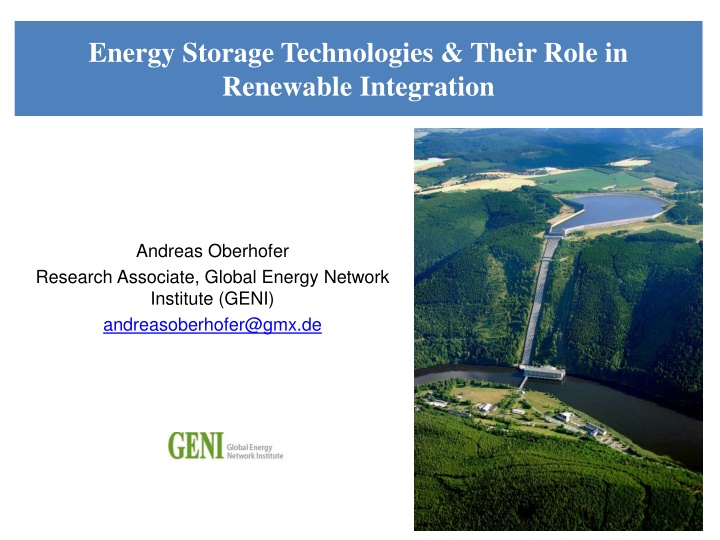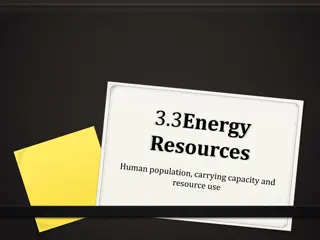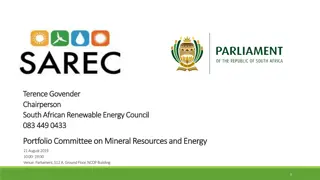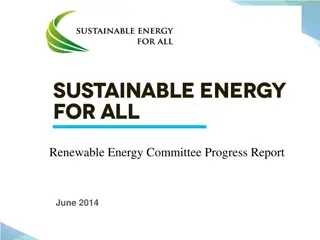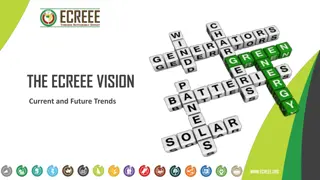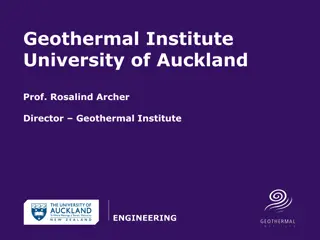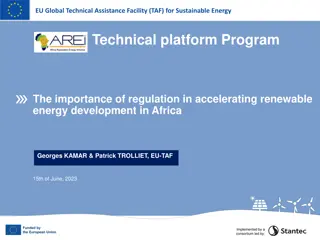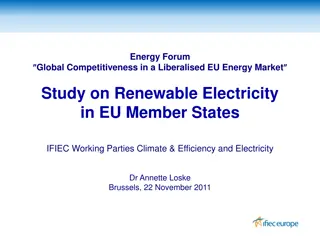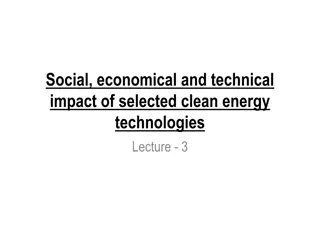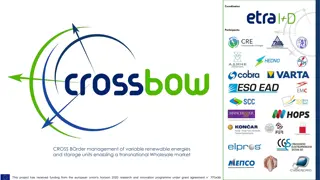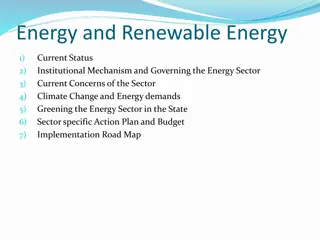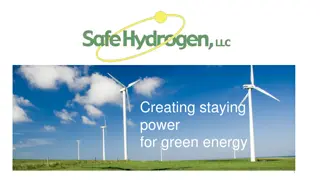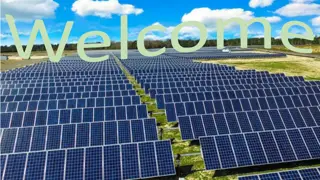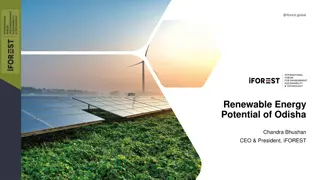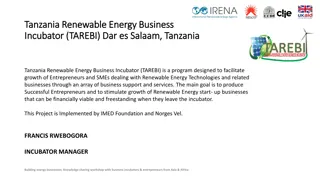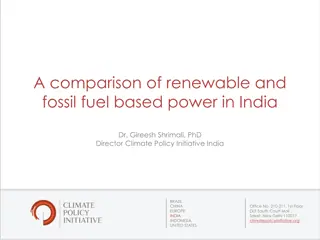Energy Storage Technologies & Their Role in Renewable Integration
This content delves into various energy storage technologies such as flywheels, superconducting magnetic energy storage, batteries, pumped storage hydroelectricity, compressed air energy storage, and electrolysis of water. It discusses their pros and cons, emphasizing the importance of energy storage in balancing fluctuating renewable energy sources for grid stability.
Download Presentation

Please find below an Image/Link to download the presentation.
The content on the website is provided AS IS for your information and personal use only. It may not be sold, licensed, or shared on other websites without obtaining consent from the author.If you encounter any issues during the download, it is possible that the publisher has removed the file from their server.
You are allowed to download the files provided on this website for personal or commercial use, subject to the condition that they are used lawfully. All files are the property of their respective owners.
The content on the website is provided AS IS for your information and personal use only. It may not be sold, licensed, or shared on other websites without obtaining consent from the author.
E N D
Presentation Transcript
Energy Storage Technologies & Their Role in Renewable Integration Andreas Oberhofer Research Associate, Global Energy Network Institute (GENI) andreasoberhofer@gmx.de
Table of Content 1 2 Short Introduction to the Electric Grid Energy Storage Technologies 2.1 Flywheels 2.3 Superconducting Magnetic Energy Storage (SMES) 2.3 Batteries 2.4 Pumped Storage Hydroelectricity (PSH) 2.5 Compressed Air Energy Storage (CAES) 2.6 Electrolysis of water and Methanation Summary / Conclusion 3
1 Short Introduction to the Electric Grid The amount of electricity produced must always be on the same level as demanded! Base Load Intermediate Load Peak Load Source: http://www.world-nuclear.org/info/inf10.html
1 Short Introduction to the Electric Grid Most renewable energy sources have a fluctuating output. Source: http://michaelwenzl.de/wiki/ee:virtuelles-kraftwerk-lechfeld:vortrag_gruene Need for storage solutions!
2 Energy Storage Technologies Storage systems balance out the fluctuation of renewable energies. Source: http://www.saftbatteries.com/MarketSegments/Energystorageandrenewables/OnGridEnergyStorage/Electricity Consumption/tabid/467/Language/en-US/Default.aspx
2.1 Flywheels Flywheels store energy in form of kinetic energy in a rotating hub. Source: http://www.acsystems.com/vycon/
2.1 Flywheels Pros and Cons Low maintenance and long lifespan: up to 20 years Almost no carbon emissions Fast response times No toxic components High acquisition costs Low storage capacity High self-discharge (3 20 percent per hour)
2.2 Superconducting Magnetic Energy Storage A SMES system stores energy in form of an electromagnetic field surrounding the coil. Source: http://www.lowcarbonfutures.org/assets/ media/SMES_final.pdf
2.2 Superconducting Magnetic Energy Storage Pros and Cons Fast respond times Capable of partial and deep discharges No environmental hazard High energy losses (~12 percent per day) Very expensive in production and maintenance Reduced efficiency due to the required cooling process
2.3 Batteries Batteries store energy in chemical form. Most battery technologies use two different compounds which release energy in form of an electrical current when reacting with each other. Source: http://www.wholesale-electrical-electronics.com/p-solar-battery-np12- 200ah-12v-200ah-855419.html
2.3 Batteries Pros and Cons Common technology High potential for improvements Limited life cycles Rather low energy densities Limited life cycles Require a lot of resources for production
2.4 Pumped Storage Hydroelectricity (PSH) In an PSH electrical powered turbines pump water into higher reservoirs. When needed, the water flows back down and power the reversed turbines. Source: http://www.bbc.co.uk/scotland/learning/bitesize/ standard/physics/energy_matters/generation_of_electricity_rev3.shtml
2.4 Pumped Storage Hydroelectricity (PSH) Pros and Cons Mature technology, capable of storing huge amounts of energy High overall efficiency (around 70-80 percent) Fast response times Inexpensive way to store energy Few potential sites Huge environmental impacts Requires a significant huge water source
2.4 Pumped Storage Hydroelectricity (PSH) With the new role of PSH, the numbers of new constructions have improved drastically and will furthermore. Source: http://www.renewableenergyworld.com/rea/news/article/2011/08/renaissance-for-pumped-storage-in-europe
2.5 Compressed Air Energy Storage (CAES) CAES plants store energy in form of compressed air in underground caverns. The Advanced Adiabatic (AA) CAES stores the heat produced during the compression and compensates the freezing during the expansion. Source: http://www.climateandfuel.com/pages/storage.htm
2.5 Compressed Air Energy Storage (CAES) Pros and Cons Capable of storing huge amounts of energy, similar to PSH AA-CAES capable of efficiencies nearly as good as PSH (~70%) Fast response times Inexpensive way to store energy Requires sealed storage caverns Economical only up to a day of storage (for AA-CAES) Competing against other storage needs (natural gas, hydrogen) Not yet fully developed
2.5 Compressed Air Energy Storage (CAES) Considerably large storage opportunities exist worldwide. Source: http://web.fhnw.ch/plattformen/ee/CAS%20EE%2009%20ZA%20Druckluftspeicher.pdf
2.5 Electrolysis of Water and Methanation Excess Electricity could be used to produce hydrogen and methane out of water and inject it into the natural gas grid.
2.5 Electrolysis of Water and Methanation The natural gas grid in Germany alone holds the potential of storing approximately 220 TWh. ( cf. current PSH share: 0,07 TWh )
2.5 Electrolysis of Water and Methanation Pros and Cons Clean sustainable way of storing energy Capable of storing huge amounts of energy Capable of storing energy for several days, even months Very low efficiency (30 40 percent) Potential for efficiency unlikely to pass 50 percent Requires a good constructed natural gas grid
3 Summary / Conclusion Current renewable technologies require storage possibilities Leading to a huge storage problem world wide PSH currently the only viable solution Flywheels, SMES and batteries possess small potential CAES shows the greatest potential Electrolysis/Methanation as a contingency plan
